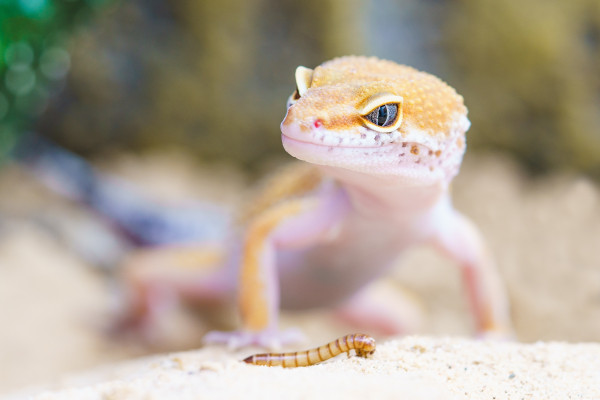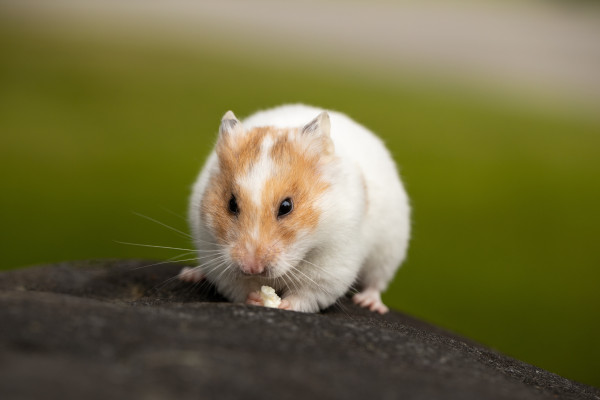
Reptiles and Small Mammals: An Industry Perspective
The pet industry is dominated by dogs and cats, so it is often easy to forget about the “other” pets, such as reptiles and small mammals. However, this sector comprises over 12 million households and is worth approximately $3 billion in the United States.1,2
The COVID-19 pandemic drove the acquisition of not only dogs and cats but also reptile and small mammal pets. A net increase of 64% and 47% was observed for small mammal ownership and reptile ownership, respectively, from 2020-2022.1 Gen Z and Millennials dominate ownership in this area, with these two age demographics accounting for 69% of small animal ownership and 66% of reptile ownership.2 Part of the draw to these pets is that these animals typically require less space than dogs and cats and tend to be ideal for smaller living spaces, such as in apartments or within cities. Just like dogs and cats, these animals are highly valued by their owners, with 85% of “other pet” owners considering their pets as family, and the premiumization of the products offered, from food and treats to enclosures, is a trend that is expected to continue.1

The reptile industry is currently valued at approximately $1.5 billion in the United States alone and the global market is expected to grow at a rate of 6.23% between 2021 and 2025.3 The American Pet Products Association (APPA) estimates that there are over 6 million households in the U.S. that have reptiles as pets.2 The small mammal market size is similar in size to the reptile market. It is estimated that 6.7 million households in the U.S. own small mammals2, including rodents (rats, mice, hamsters, gerbils, chinchillas, and guinea pigs), rabbits, ferrets, hedgehogs, and sugar gliders.
The diets for these animals vary widely, as species within the “other” pet space range from carnivores and insectivores to omnivores and herbivores. A wide range of products need to be offered to cater to the nutritional needs of each species. The combined small mammal and reptile food markets are forecasted to grow to $986.4 million between 2021 and 2025, with a compound annual growth rate (CAGR) of 8.65%.4

The market does currently offer both species-specific diets and multi-species diets for small mammals and reptiles. Among rodents specifically, rats, mice, hamsters, and gerbils are often offered diets covering all species, with chinchillas and guinea pigs receiving unique diets because of their differing nutritional needs. Many reptiles are fed live prey diets, whether insects, small mammals, or fish. There are complete and balanced diet offerings for some reptiles, like tortoises, turtles, and geckos. For others, like bearded dragons and iguanas, pet owners must research a healthy balance of insects and vegetables for various life stages. A complete and balanced diet for tegus, a species of omnivorous lizards that are popular pets, represents a large market gap, with many adult tegu owners relying upon dog and cat food to fill that nutritional void. This demographic of pet owners is also heavily interested in treats, with 74% of reptile owners and 94% of small animal owners purchasing treats for their pets in 2022.2
A proper nutritional formulation for pocket pets is vital for their overall health and longevity. By ensuring products are formulated by a nutritionist to be complete, balanced, and appropriate for the intended species, we can ensure the owners of these unique animals have access to quality products for their pets.
Resources:
- Fish, small mammal, herptile, and bird products: U.S. pet market trends and opportunities, 3rd Edition. The Freedonia Group. (2021). https://www.freedoniagroup.com/packaged-facts/fish-small-mammal-herptile-bird-products-pet-trends-opportunities.
- Pet industry market size, Trends & Ownership Statistics. American Pet Products Association. (2023). https://www.americanpetproducts.org/press_industrytrends.asp.
- Pet reptile products: U.S. pet market trends and opportunities, 2nd edition. The Freedonia Group. (2020). https://www.freedoniagroup.com/packaged-facts/pet-reptile-products-u-s-pet-market-trends-and-opportunities,-2nd-edition.
- Market research reports - industry analysis size & trends. Technavio. (2021, March). https://www.technavio.com/report/small-mammal-and-reptile-food-market-industry-analysis
Follow us on LinkedIn for the latest updates on all things happening here at BSM Partners.
About the Authors
Corrine Harris Trevino formerly served as a Manager of Technical Services in the Product Innovation Group at BSM Partners. Outside of work, she can generally be found walking, training, and playing with her dogs or wrangling her flock of sheep after a daring escape. Corrine also declares a bias for the Cardigan Welsh Corgi, which she believes to be the superior of the two Corgi breeds.
Dr. Mary Cope formerly served as Senior Analyst at BSM Partners. Mary graduated from the University of Georgia in 2021 with a PhD in monogastric nutrition, with her research centered around poultry nutrition. She has variety of animal experience including agricultural animals, wildlife rehabilitation, and exotic pets, in addition to companion animals.
This content is the property of BSM Partners. Reproduction or retransmission or repurposing of any portion of this content is expressly prohibited without the approval of BSM Partners and is governed by the terms and conditions explained here.